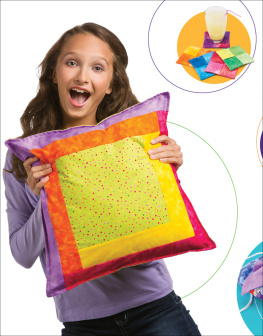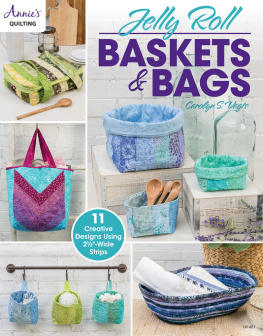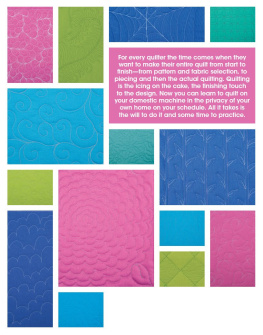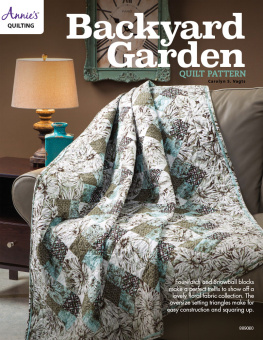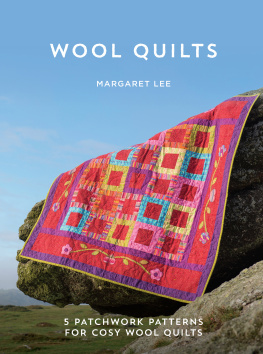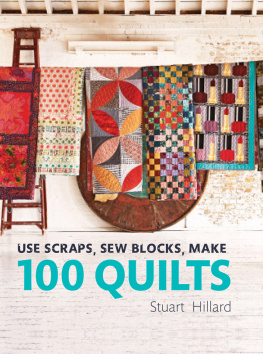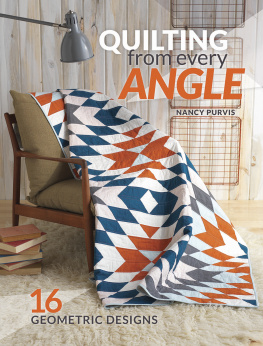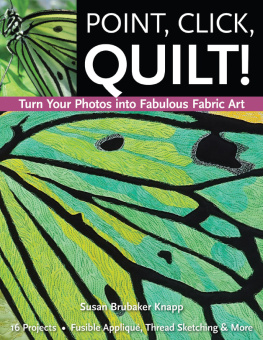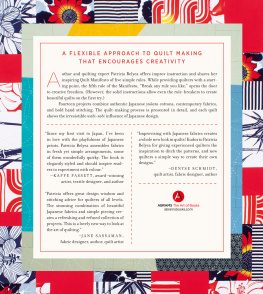Pattern Services and Revisions
If you are an Annies customer and have a question about the instructions on a pattern you have purchased, please visit:
AnniesCatalog.com/pages/customer_care/pattern_services.html
Templates
To download templates for easy printing, view the download instructions at the end of this book or click the Templates chapter in the Table of Contents.
Table of Contents
Introduction
Before you begin your quilting lessons, learn about your sewing machine and practice stitching on scraps of fabric.
Then read through the following general supplies list given below, and quilting how-to tips and quilting vocabulary found in General Instructions, pages 31 and 32. Your lessons will have you turning to these sections for tips.
SUPPLIES YOU WILL NEED
Each lesson will list materials you will need to complete the lesson project. You will also need the basic tools and equipment listed here. Please be careful when handling all the tools and equipment. Some can be dangerous.
Sewing machine
Fabric scissors
Rotary cutter and cutting mat
Clear quilting ruler
Straight pins
Curved quilting safety pins
Variety of hand-sewing needles
Seam ripper
Iron and ironing board
Water soluble fabric marking pen

SPECIFICATIONS
Coaster: 4" x 4"
WHAT YOU NEED
Materials listed make one coaster.
5 different (5") precut squares in the same color family
1 (5") square of batting
Neutral-color all-purpose thread
Basic sewing tools and supplies
COMPLETING THE COASTER
Stitch right sides together using a " seam allowance unless otherwise indicated.
Fold four of the 5" precut squares in half wrong sides together, as shown in Figure 1, and press. Mark with numbers 14 and set aside.

Position the last 5" precut square right side up on top of the 5" square of batting matching the edges as shown in Figure 2 to make a batting/backing unit.
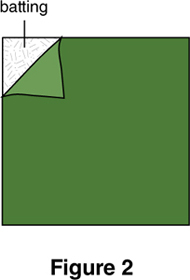
Position folded square 1 across the top half of the batting/backing unit matching cut edges (Figure 3). Pin in place.
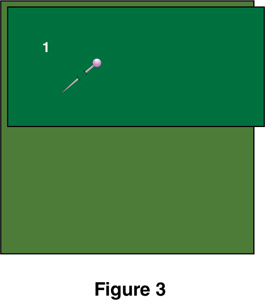
Position folded square 2 on top of the first folded square matching cut edges with the right side of the batting/backing unit as shown in Figure 4. Pin in place.

Position folded square 3 across the bottom of the batting/backing unit and on top of folded square 2 as shown in Figure 5 matching cut edges. Pin in place.
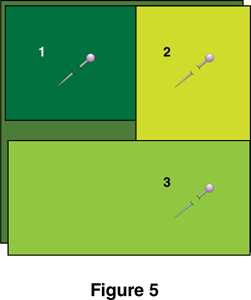
Remove the pin from folded square 1 and fold un-pinned section back over the upper right corner of folded square 2 as seen in Figure 6a.
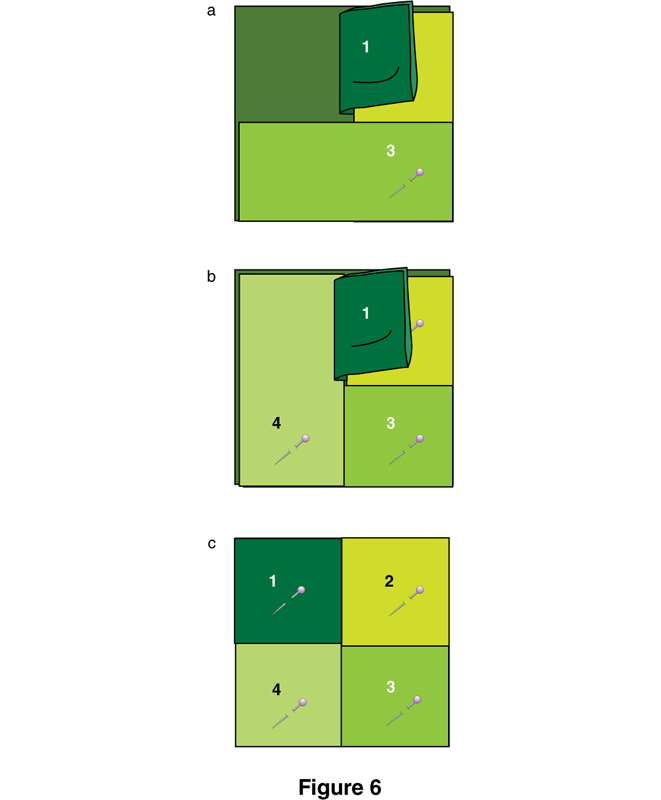
Position folded square 4 on the left side of the batting/backing unit matching cut edges as seen in Figure 6b.
Unfold folded square 1 to cover the top left corner of folded square 4 as shown in Figure 6c and pin around outside edges to hold.
Stitch " away from all outer edges, pivoting at each corner (Figure 7). Remove all pins.

Quilters Seams
Quilters want a seam that is the same width the entire length of the seam. Sewing a consistent seam is easy if you take your time and follow these instructions.
Pin through all layers close to the raw edges.
Position the raw edges on the " mark on your sewing machine bed under the presser foot and needle.
Lower the needle into the fabric, lower the presser foot and slowly begin stitching.
Keep the raw edges moving along the " mark until you have completed the seam.
Raise the needle and presser foot. Pull the stitched fabric layers away from the needle and clip the threads leaving a thread tail on the seam.
Remember: Practice makes perfect. If you are having problems, practice stitching two or more layers of scrap fabric together.
Trim each corner by cutting off some of the seam allowance on the diagonal (Figure 8). Be careful not to cut through the stitching. Trimming the corner will help make sharp, pointed corners after turning right side out.

Push the batting/backing to the right side through the folded squares. Carefully push the coaster points out with a pencil or pen. Press coaster flat.
Make more coasters by gathering the materials listed for each coaster to be made and repeat all assembly steps. 
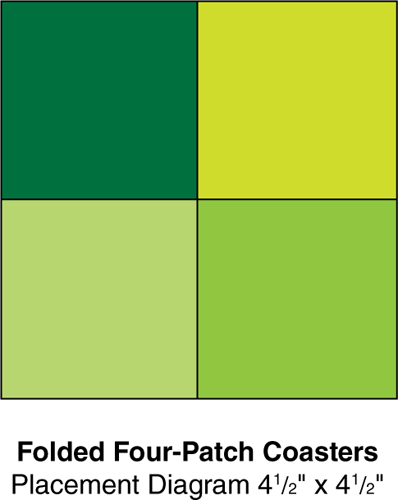

SPECIFICATIONS
7" x 7" folded
WHAT YOU NEED
9 coordinating 5" precut squares
1 coordinating fat quarter
2 (36") pieces of coordinating color "" cord
All-purpose thread
Safety pin
Basic sewing tools and supplies

CUTTING
Cut one 14" square from the coordinating fat quarter.
COMPLETING THE NINE-PATCH BLOCK
Arrange the nine 5" precut squares in three rows of three squares each as shown in Figure 1.
Note: You can rearrange the squares in the rows to make your own color arrangement and design.

Stitch the first row of squares right sides together along one side using a " seam allowance (Figure 2). Press the seam allowances to one side. Go to Pressing on page 31 for tips.


